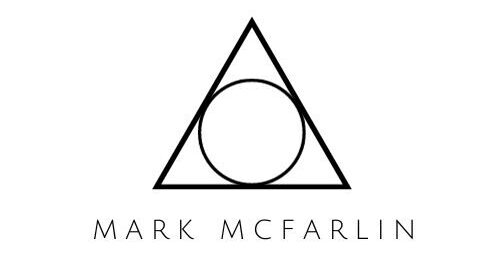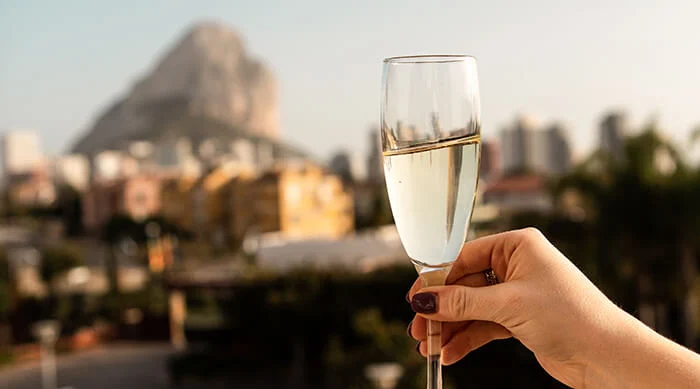Welcome to our guide, where we discuss everything you need to know about the alcohol content of champagne. Whether you are a champagne enthusiast or just curious about this bubbly drink, we’ve got you covered. In this article, we will explore how much alcohol does champagne have and what percent alcohol is champagne. So, sit back, relax, and dive into the world of champagne!
What is Champagne?
Before exploring the champagne alcohol content, it’s essential to understand what champagne is. Champagne is a sparkling wine that originates from the Champagne region of France. It is known for its effervescence and is often associated with special occasions like weddings, anniversaries, or New Year’s Eve.
How Much Alcohol Is in Champagne?
Champagne typically contains 11% to 13% alcohol content, although this can vary depending on the brand and style. It is crucial to always check the label for the exact alcohol percentage before consuming your favorite bubbly.
Several factors, such as grape variety, ripeness, fermentation process, length of aging, and dosage addition, influence the alcohol percentage in champagne. For example, non-vintage champagne generally has a lower alcohol content compared to vintage or prestige cuvées. Sweetness levels, such as brut, extra brut, or demi-sec, do not directly correlate with the alcohol content.
When compared to other wines, champagne’s alcohol content falls within a similar range. However, some still wines may have slightly higher alcohol content than champagne. It’s important to note that champagne’s effervescence can make it feel lighter and less alcoholic than still wines.
Understanding the alcohol content of champagne is essential to enjoying it responsibly. Always consume in moderation and be mindful of the effects of alcohol on your body.
Factors Affecting Alcohol Content
Several factors can affect the Champagne alcohol percentage. One important factor is the grape variety used. The amount of sugar and acid in the grapes can determine the potential alcohol content. Riper grapes tend to have a higher sugar content and, therefore, a higher alcohol potential.
Fermentation also plays a significant role in determining the champagne’s alcohol percentage. Champagne undergoes two separate fermentation processes, the first of which converts the sugar into alcohol. The length of this fermentation process can greatly affect the final alcohol percentage.
In addition to these factors, the aging process can impact the alcohol content of champagne. Longer aging periods can lead to a higher alcohol percentage. Finally, some champagne producers add a mixture of wine and sugar, called dosage, which can impact the final alcohol content.
Overall, the final alcohol percentage of champagne is a complex interplay of various factors, and the specific percentage can vary greatly between different brands and styles.
Champagne Styles and Alcohol Content
Champagne comes in various styles, each with its unique flavor profile and alcohol percentage. Non-vintage champagnes, which are blends from multiple years, usually have a lower alcohol content compared to vintage champagnes or prestige cuvées.
The sweetness level of champagne, indicated by terms like brut, extra brut, or demi-sec, does not necessarily reflect the alcohol content. For example, a demi-sec champagne may have a lower alcohol percentage than a brut champagne.
It’s important to note that different factors influence the alcohol content of champagne, including the grape variety, ripeness of grapes, fermentation process, aging period, and addition of dosage. As a result, the alcohol percentage of champagne can vary even within the same style or brand.
Comparing Champagne to Other Wines
When it comes to alcohol content, champagne falls within a similar range to other wines. Champagne typically has an alcohol percentage ranging from 11% to 13%. However, some still wines may have a slightly higher alcohol content compared to champagne. It’s important to note that champagne’s effervescence can make it feel lighter and less alcoholic compared to still wines.
Champagne vs. Red Wine
Red wine is known for its bold flavors and higher alcohol content, typically ranging from 12.5% to 15%. In comparison, champagne’s alcohol content falls within the lower range of this spectrum. However, the effervescence of champagne can make it feel less heavy on the palate than red wine.
Champagne vs. White Wine
White wine is often associated with a crisp and refreshing flavor profile, with alcohol content ranging from 9% to 14%. Like red wine, champagne’s alcohol content falls within the lower range of this spectrum. However, champagne’s unique effervescence sets it apart from other white wines and can contribute to a more celebratory drinking experience.
Overall, champagne’s alcohol content is comparable to other wines. Still, its effervescence and unique flavor profile make it a standout choice for special occasions or to add an extra touch of elegance to any drinking experience.
Enjoying Champagne Responsibly
While champagne is a delightful way to celebrate a special occasion or unwind after a long day, drinking responsibly is crucial. Knowing the alcohol content can help you make informed decisions about how much to consume.
The alcohol content of champagne varies depending on factors such as grape variety, fermentation process, and aging. On average, champagne has an alcohol content ranging from 11% to 13%. It’s essential to keep this in mind when enjoying your favorite bubbly.
To ensure you’re drinking responsibly, pace yourself and drink in moderation. Remember that even one glass of champagne can affect your driving or impair your judgment. Consider alternating your drinks with water or non-alcoholic beverages to stay hydrated and sober.
It’s also important to be aware of how alcohol affects your body. Women, people with a lower body weight, and those with a family history of alcoholism may be more sensitive to the effects of champagne. Always listen to your body and know your limits.
Drinking champagne responsibly allows you to fully enjoy its effervescence and delicate taste without compromising your health or safety.
Expert Tips for Champagne Lovers
If you’re a fan of champagne, we have some expert tips to help you enhance your experience.
- Try different champagne styles: From non-vintage to prestige cuvées, champagne offers a variety of styles that showcase different tastes and alcohol contents. Experiment with other brands and styles to find your favorite.
- Pair with food: Champagne pairs well with a variety of foods, including seafood, cheese, and light appetizers. Experiment with food pairings to find the perfect match for your champagne.
- Drink in moderation: Remember that champagne, like any alcoholic beverage, should be consumed in moderation. Be aware of the alcohol content and enjoy responsibly.
- Savor the moment: Champagne is often associated with celebrations and special occasions, so take the time to savor the flavors and enjoy the moment.
With these expert tips, you can take your love for champagne to the next level. Cheers to a delicious and enjoyable champagne experience!
Champagne as a Mixer
Champagne can add a touch of elegance and effervescence to cocktails, making it a popular choice for mixologists. However, it’s important to consider the alcohol percentage of champagne when using it as an ingredient.
As we’ve discussed, the alcohol content of champagne typically ranges from 11% to 13%. When using champagne as a mixer, it’s important to keep this in mind to ensure a balanced and enjoyable cocktail experience.
Champagne can be used in a variety of cocktails, from classic champagne cocktails to modern twists. For instance, the French 75 is a classic cocktail that combines gin, lemon juice, and champagne for a refreshing and bubbly drink. Another popular choice is the bellini, which mixes pureed peaches and champagne to create a fruity and sparkling cocktail.
When using champagne as a mixer, experiment with different flavors and ingredients to find the perfect combination. And remember, always drink responsibly and in moderation.
Champagne Alternatives
Are you not a fan of champagne or want to explore other options? Look no further than sparkling wines and proseccos with varying alcohol percentages. These alternatives can provide similar effervescence and celebratory qualities while offering different flavor profiles and alcohol levels.
Sparkling wines, such as Cava from Spain and Prosecco from Italy, are great alternatives to champagne. Cava typically has a lower alcohol percentage, ranging from 10% to 12%, while Prosecco falls in a similar range to champagne, averaging around 11% to 12%. These sparkling wines offer a range of flavors, from dry to sweeter varieties, and can be a more affordable option for those on a budget.
If you’re looking for a lighter and less alcoholic option, consider a brut nature or extra brut sparkling wine. These styles have little or no added sugar and can have alcohol percentages as low as 5%. However, they may not be as effervescent or celebratory as champagne or other sparkling wine options.
No matter your preferences, there is a bubbly option for everyone. Don’t be afraid to try new things and explore the world of sparkling wines beyond just champagne.
Storing Champagne
Proper storage is crucial in preserving the quality and alcohol content of your champagne. Keep your champagne in a dark, cool place, away from sunlight and temperature fluctuations. The ideal temperature for storing champagne is between 45°F to 50°F (7°C to 10°C). Avoid storing your champagne in the refrigerator for too long, as it can dry out and affect the alcohol content and flavor.
Store the bottle upright to minimize the surface area exposed to oxygen, which can impact the taste. If you plan on storing an open bottle of champagne, use a stopper or a special cap to keep the bubbles intact. Once you reseal the bottle, store it in the refrigerator and consume it within 2-3 days to ensure maximum freshness and maintain the intended alcohol percentage.
By following these storage recommendations, you will enjoy your champagne at its best and experience its unique taste and effervescence.
Conclusion
Whether you’re celebrating a special occasion or simply enjoying a glass of bubbly with friends, it’s important to understand the alcohol content of champagne. With an alcohol percentage ranging from 11% to 13%, champagne can vary depending on the brand, style, and aging process. As with any alcoholic beverage, it’s essential to enjoy champagne responsibly and be mindful of how much you’re consuming.
Remember to keep champagne in a cool, dark place to maintain its quality and alcohol content. And if you’re not a champagne fan, sparkling wines and proseccos are available with varying alcohol percentages to suit your preferences.
For champagne lovers, consider trying different styles and food pairings to enhance your experience. And if you’re using champagne as a mixer, be aware of its alcohol content to ensure a balanced cocktail.
Champagne is a delightful and effervescent beverage that should be enjoyed responsibly. So next time you raise a glass of bubbly, savor the moment and appreciate the flavors and alcohol content of your favorite champagne.

